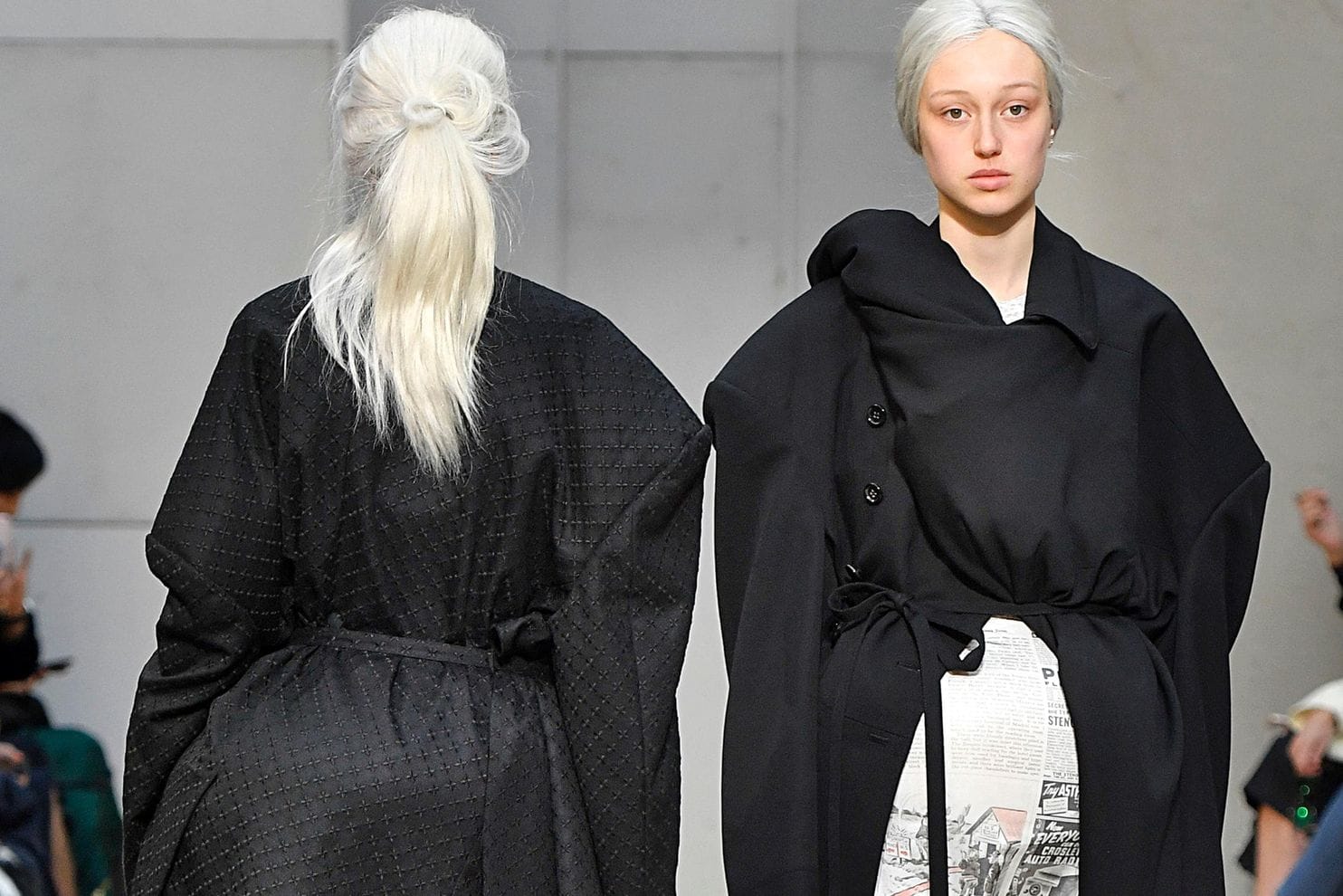Washington Post – 30 septembre 2018

On the Comme des Garçons runway, pregnancy as metaphor
By Robin Givhan
PARIS — For many years, Rei Kawakubo has used runway presentations for her Comme des Garçons collection as a place for experimentation. What she shows aren’t so much clothes as theories about dress, representation and beauty. Her gaze is once again shifting, and this time, she is looking inward.
Her spring 2019 show was roiling with emotion. The central questions seemed to be: How does fashion make you feel? How does fashion express your mood, your worries, your fears? How do we internalize outside pressures to look and be a certain way?
To explore those questions, Kawakubo walled off a tiny area within the expansive central hall at the École des Beaux-Arts — creating a small space within a larger space. The models walked along a runway raised only a few inches off the ground. They were close enough to touch. There was no real distance between the observed and the observer.
And when the first models appeared, they were unnerving — not because they looked terribly odd or otherworldly but because they looked so normal. They wore wigs of long white hair, and they were dressed in black, in clothes with a masculine sensibility. But in front, just below the waist, the garment had been slashed open and their belly protruded: an allusion to pregnancy, an allusion to an inconvenient body type bursting the seams.
Below the dark menswear were bodystockings covered in newsprint, the Comme des Garçon logo and various words. The slashing seemed almost violent, highlighting the tension between masculine constraints and the power of the female body, between the primacy of men and the voices of women.
Culturally, we set rules about how the body is supposed to look, about how it should be shaped. The shapes of these bodies break all those rules. This collection asks: Who is in control of the female body? The woman who inhabits it or the society that surrounds it?
Kawakubo’s models encouraged the audience to meditate on these concerns, each adding a new point of contention, each focusing on a different pressure point.
There were women wearing newsprint leggings and bodysuits with exaggerated arms. Kawakubo returned to the use of padding to distort the shape of the body. She exaggerated the hips, created protrusions on the back, enhanced the derriere. Yes, the distortions make the eye reconsider our set definitions of beauty, but there’s something else at work here, something more emotional. These bodies have been under pressure. It’s almost as if exterior burdens, frustrations and worries have weighed so heavily on them that they have shifted under the weight. But they have not broken.
One model appears in a dress with elongated sleeves. Underneath the dress, she’s draped in chains, which drag along the floor as she walks. The audience can hear them clanking along the wooden walkway over the gravelly voice of Tom Waits on the soundtrack:
Wasted and wounded, it ain’t what the moon did
Got what I paid for now
See ya tomorrow, hey, Frank can I borrow
A couple of bucks from you?
To go waltzing Mathilda, waltzing Mathilda
You’ll go a-waltzing Mathilda with me
As the song rumbled in the background, a soundtrack filled with anguish, one considered what this woman has broken free from. Social norms, expectations or rules? And how long will the scars of her fight remain with her? She’s free, but she’s not unburdened.
In watching the models walk slowly and meditatively in the room, with their white wigs and padding, one wondered why the artifice? Why not use models whose hair has naturally gone white with age? Or whose bodies don’t require extra padding to add bulk? The answer may be that all appearance is artifice. The exterior is just costume. Beauty is an external construct.
The truth lies within. But fashion can shine a light on it.

Sorry, the comment form is closed at this time.